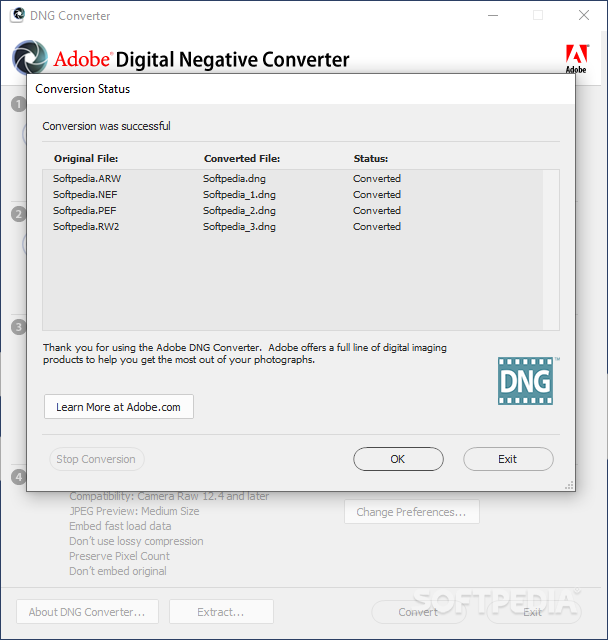
It's easier if you create separate folders for images and video, so I created 2 subfolders called HEIC_ORIGINALS and HEVC_ORIGINALS. After you find it, copy/move that file and all subsequent files to a new folder under HEIC_CONVERSION. If you don't know the date when your device changted over to HVEC, you'll need to poke around with various dates to find exactly which video is the first HVEC.
#ADOBE DNG CONVERTER FOR WINDOWS 10 MOVIE#
Quicktime Player has a menu that is easy to access called "Show Movie Inspector" that will tell you if the video is H264 or H265/HVEC. For HEVC (videos), the filename extensions are all. Fortunately for images, the file extension is '.heic', so those are easy to identify. Youll need to use a tool to determine if the files are HEIC or not. However, if you are like me and have a phone partially filled with HEIC and non-HEIC photos (and videos, more on that later), then you don't really want to re-process the non-HEIC files. If the photos are *ALL* HEIC, then you don't need to separate them.Connect the phone via cable and use any tool to copy files from Pictures into a new subfolder in your HEIC_CONVERSION called ORIGINALS somewhere outside of your your current photo directory structure.At some point, you'll probably delete the jpg versions that we are creating, so keeping them separate will reduce the confusion later

You'll want to back these up, but they don't necessarily need to get mixed in with your other photos unless your tools support them.



 0 kommentar(er)
0 kommentar(er)
